64 F. high in the Twin Cities Monday.
66 F. average high on May 5.
67 F. high on May 5, 2013.
Severe storm risk peaks Thursday.
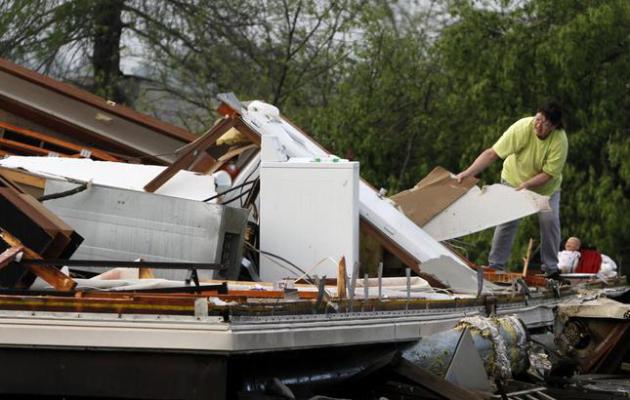
“…In
1950, less than 1 percent of Americans lived in mobile homes. A
half-century later, that number rose to between 7 and 8 percent in the
U.S. and to about 15 percent in the Southeast. The figure is higher in
Mississippi — 21 percent…” – from a story on mobile home vulnerability to tornadoes at The Clarion-Ledger.
Photo credit: “Teresa
Ingram removes debris from what is left of her mobile home after a
tornado passed through destroying Billy Barbs mobile home park on
Tuesday, April 29, 2014, in Athens, Ala.” (AP Photo/Butch Dill).
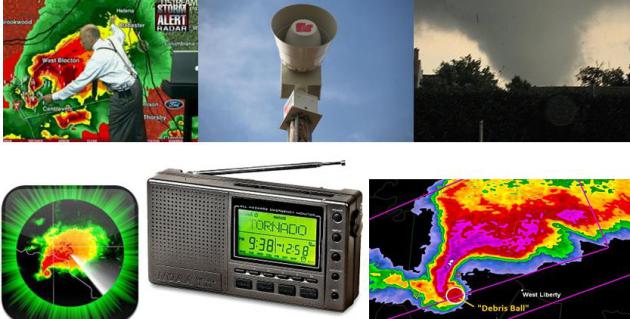
Information Overload
Predicting
severe weather is hard enough. Communicating it effectively, in an age
of limitless media options, is even harder. Today marks the 49th
anniversary of the historic 1965 tornado outbreak: five metro tornadoes,
four of them F-4 in intensity, with estimated winds near 200 mph.
Fridley was hit twice within 68 minutes. WCCO-AM stayed on the air with
continuous coverage, saving countless lives.
But that was a
simpler age, when nearly everyone was tuned to local radio & TV. Now
we have Twitter, Facebook, apps and 300 channels. We have new tools to
communicate, but no common digital hearth to gather around when things
get really bad. Which makes things more challenging, and one (of many)
reasons why many TV meteorologists have ulcers on their ulcers. In
additionl to live cut-ins on the air, now they’re expected to update
radio stations, web pages and social media.
Mission Impossible.
One
word of advice: don’t depend on sirens, and do invest in a NOAA Weather
Radio for your home & office. That, and a strong dose of common
sense works wonders. Listen to your gut.
Severe storms are
possible, especially Thursday, as warm, juicy air surges northward; jet
stream winds aloft strong enough to whip up large hail, even a few
tornadoes.
Hey, at least it won’t snow.
1 to 2 inches of
rain may soak your lawn later this week. Clearing on Saturday gives way
to another warm spike and severe risk by Monday.
It’s a soggy pattern, but we’re finally limping into spring.
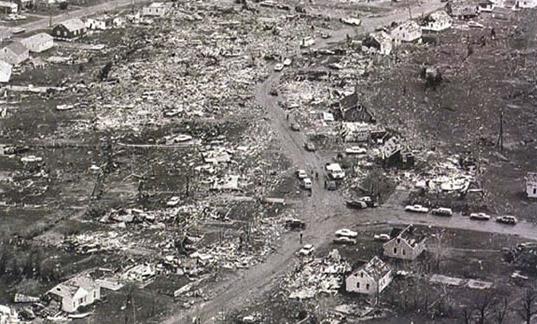
Details of the May 6, 1965 Tornado Outbreak.
When people tell me “I live in the 7-County metro area – we don’t get
tornadoes here, they only hit farms” I gently remind them of what
happened over the northern and western suburbs on this date 49 years ago
today. Here’s an excerpt of a very good summary from the Twin Cities National Weather Service: “The
worst tornadoes in Twin Cities history occurred in 1965, with five
tornadoes sweeping across the western and northern portions of the
7-county region, and a sixth tornado just outside the metropolitan area.
Four tornadoes were rated F4, one was an F3, and the other produced F2
damage. Thirteen people were killed and 683 injured. Many more would
have been killed had it not been for the warnings of the U.S. Weather
Bureau, local officials, and the outstanding communications by local
radio and television stations. Many credit the announcers of WCCO-AM
with saving countless lives. It was also the first time in Twin Cities
history that civil defense sirens were used for severe weather….”
Photo credit above: “An areal view of the destruction along Louisa Drive in Mounds View.” Picture courtesy of the Minnesota Historical Society, Photograph Collection.
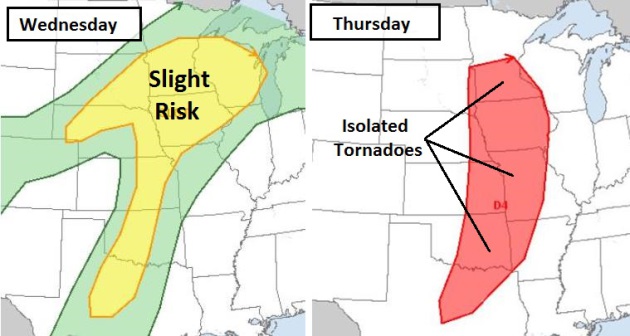
Evolving Severe Risk.
As the jet stream buckles and inflamed air surges north, conditions
will become increasingly ripe for a severe storm outbreak Wednesday into
Thursday. NOAA SPC outlines the risk area above. For Minnesota Thursday
appears to be the more active, potentially severe day, especially if
the sun comes out and temperatures sppike near 80F by late afternoon.

Welcome Warmth, With a Few Unpleasant Side Effects.
ECMWF guidance shows highs pushing well into the 70s Thursday, again
Monday of next week. If the sun breaks out 80F isn’t out of the
question. There may be enough instability, low-level moisture and wind
shear aloft for severe storms Thursday, again early next week. Graphic:
Weatherspark.
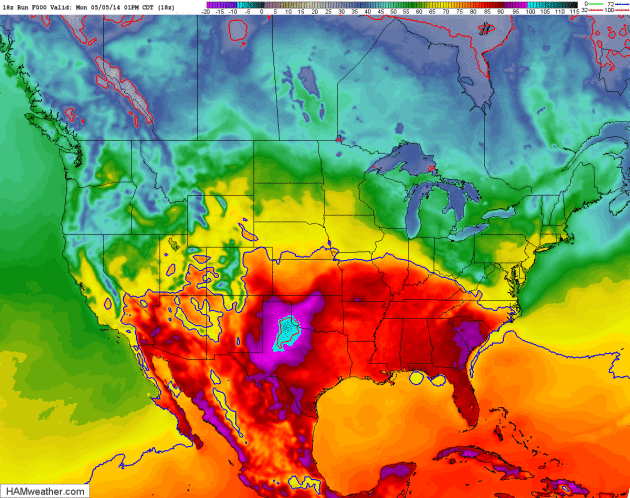
Heating Up.
Temperatures soared above 100F over much of the southern Plains, and as
that heat spurts north in the coming days the atmosphere will become
destabilized, ripe for scattered strong to severe T-storms to sprout
along the I-35 corridor. 12 KM temperatures from NOAA and HAMweather.
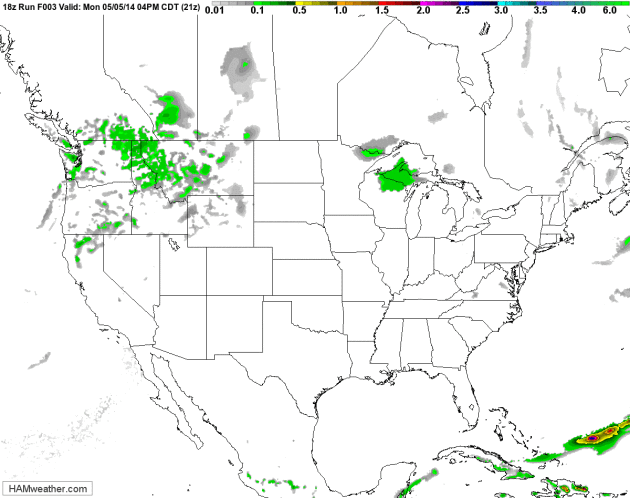
Future Radar.
By midweek a strong storm spins up along the boundary separating cool
and hot, sending a pinwheel of showers and strong to severe storms
across the Dakotas into the Midwest and Mississippi Valley. Dry weather
prevails over the southeast and much of California through the period.
NAM model guidance: HAMweather.
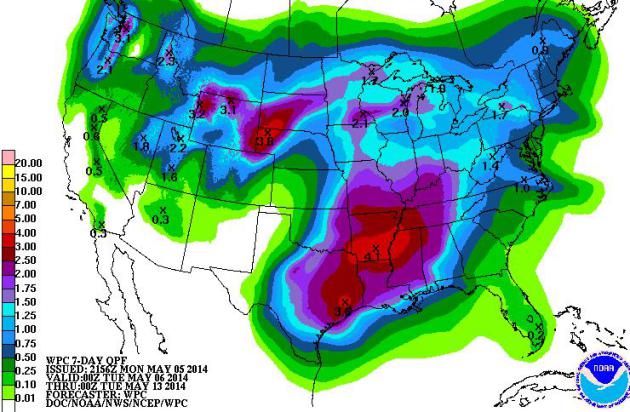
Southern Soaking – Cold Enough for Snow Northern Rockies.
Sharp temperature gradients will set the stage for heavy rain (mixed
with snow) over the western High Plains, with Gulf Moisture fueling some
2-4″ rainfall amounts from near Dallas to Little Rock and Memphis. Much
of Minnesota may pick up 1-2″ rain over the next 7 days. Map: NOAA.
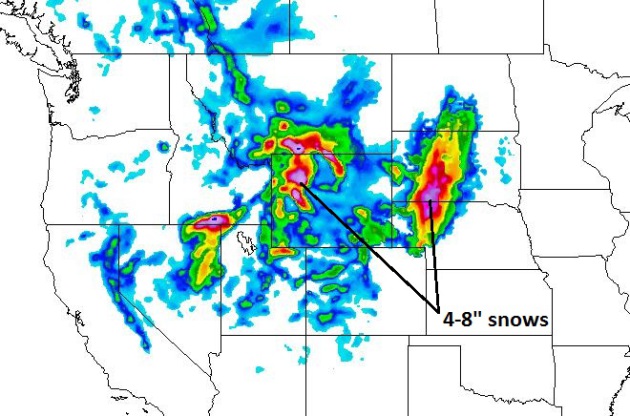
March Flashback.
Winter isn’t done with the central and northern Rockies and High Plains
just yet. Models show plowable amounts of snow from the central Dakotas
westward to Wyoming and southern Montana.

Mobile Home Tornado Risk and Risk of a Super El Nino? In today’s editions of Climate Matters we take a look at some daunting statistics:
you are 20 times more likely to be killed in a tornado if you’re in a
mobile home vs. a home with a foundation. Also, a look at why this may
not be a garden-variety El Nino brewing. Will this warming phase in the Pacific rival 1997-98?

Recap of Last Week’s Tornado Outbreak. Wikipedia
has a good recap of every one of the tornadoes that touched down: 69
total; 9 EF-3 and 2 EF-4 intensity with 35 deaths and 247 injuries.
* Claims Journal reports Arkansas EF-4 destroyed 328 homes.
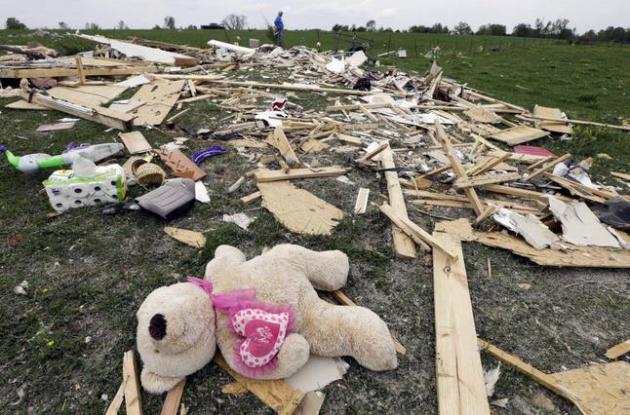
Mobile Homes Can Be Tornado Death Traps.
Of the 31 tornado-related fatalities so far in 2014 more than half have
been people seeking refuge in mobile homes. Here’s an excerpt of a
story at The Clarion-Ledger: “Live
in a mobile home? The odds are up to 20 times higher you will die at
the hands of a tornado than if you lived in a foundation-built home. In
1980, a fourth of all tornado deaths in the U.S. came in mobile homes.
Now half the deaths take place there. “Mobile homes are economical, but
there’s a trade-off when there’s a tornado watch and certainly a tornado
warning,” said State Climatologist Mike Brown. “You’ve got to get out
of them…”
Photo credit above: “Rubble from the
mobile home belonging to 60-year-old John Prince and his wife,
44-year-old Karen Prince, is scattered in a field Tuesday, April 29,
2014, near Fayetteville, Tenn. The couple was killed Monday when the
home was thrown about one-quarter mile from its foundation. Around 50
tornadoes ravaged the South Monday, according to the National Oceanic
and Atmospheric Administration’s Storm Prediction Center.” (AP Photo/Mark Humphrey).
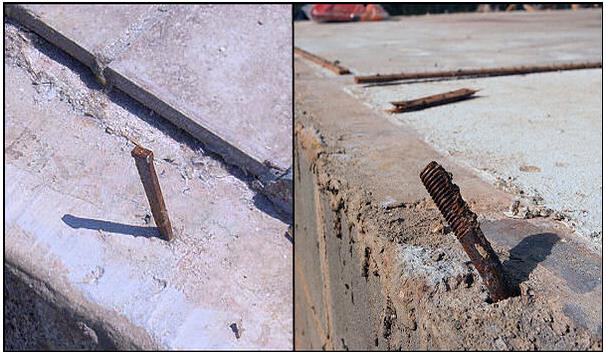
No EF-5 This Time: Anchor Bolts Not Detected In Most Construction. One of the best ways to keep your home on its foundation is to use anchor bolts vs. flat nails. The Little Rock office of the NWS
went with an EF-4 classification of the recent Vilonia/Mayflower
tornado, largely because “scraped foundations” did not take advantage of
more aggressive anchor-bolt technology used to keep a home in place
during extreme storms like tornadoes: “…Using cut nails to secure
homes to the foundation is widely practiced and the minimum standard in
most of the building codes. This is according to Dr. David Prevatt,
Associate Professor of Civil and Coastal Engineering at the University
of Florida. As stated by Dr. Prevatt: “It is my opinion that cut nails
can only be considered a temporary connection while installing a wall.
They are in no way, shape or form have the capacity to resist the
sliding loads or the uplift loads reduced by high winds that impact the
walls of a building.” Without anchor bolts, it took less wind to sweep
houses away in Vilonia (Faulkner County). This explains the EF4 (instead
of EF5) rating that was ultimately decided upon…”
Photo credit above: “This
home to left in the Vilonia (Faulkner County) area had cut nails
instead of anchor bolts to fasten the structure to the foundation. To
the southwest of Roland (Pulaski County), another home had anchor bolts
(to right), but there were no signs of any washers or nuts to hold the
walls in place. Both homes were wiped from their slabs by a tornado
(rated EF4) on 04/27/2014.”
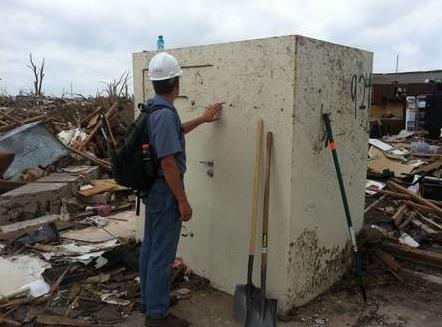
has an article that points out specific steps homeowners can take to
withstand tornado winds. Very little (short of steel-reinforced
concrete) will survive an extreme EF-4 or EF-5, but then again
extreme tornadoes make up only 1-2% of all tornadoes. Here’s an excerpt:
“Researchers, including faculty and students from the University of
Alabama, who studied the aftermath of a devastating 2013 tornado in
Oklahoma say simple design changes could improve the survivability of
wood-frame structures such as residential homes during tornadoes. “There
are some simple things you could do to keep you house together,” said
Andrew Graettinger, the research team’s lead investigator…”
Photo credit above: “Andrew
Graettinger, a University of Alabama researcher, examines a safe room
that survived the tornado that struck Moore, Okla., in May 2013.” Photo: Andrew Graettinger.
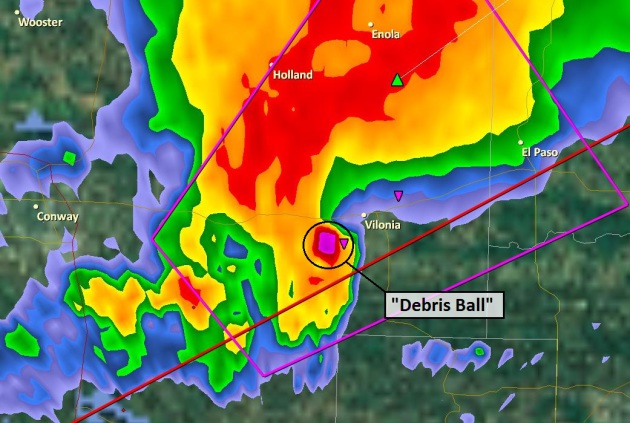
Team From University of Alabama in Huntsville Studying Development of Tornadoes. The Republic
reports on one of many ongoing tornado research programs. One of the
biggest challenges: determining which rapidly rotating “supercells” will
go on to tornado, and estimating the potential
intensity/path/destructive power of that tornado; here’s a clip: “…Gentry
said that over the years, some members of the group have worked on the
“debris signature” theory. “And Monday (when the tornado hit Limestone
County) weather service officials were saying there was a debris cloud
and a tornado was following so people needed to take cover,” Gentry
said. “Through research they have determined that nothing else (but a
tornado) is going to project debris 30,000 feet in the air. So, when
they see a debris cloud, a tornado is very close behind…”
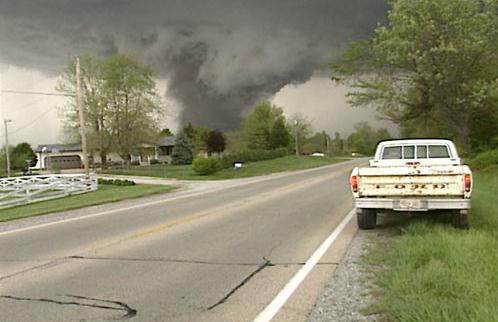
Official: Tornado Protection at Iowa Schools Needs Upgrade. Here’s the intro to a story at The Des Moines Register: “Iowa
doesn’t have enough safe rooms in its schools to protect children from
tornadoes and other severe weather, and it would be a good idea for more
to built, says Iowa’s top disaster management official. Mark Schouten,
director of the Iowa Department of Homeland Security and Emergency
Management, told reporters Monday that his agency and the Federal
Emergency Management Agency both support the construction of additional
school safe rooms, which are reinforced to withstand extremely strong
storms…”
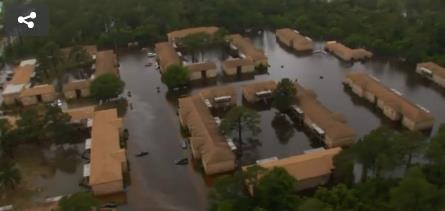
More Than 1200 Homes Seriously Damaged By Last Week’s Flooding. WEAR-TV in Pensacola has the video and details.
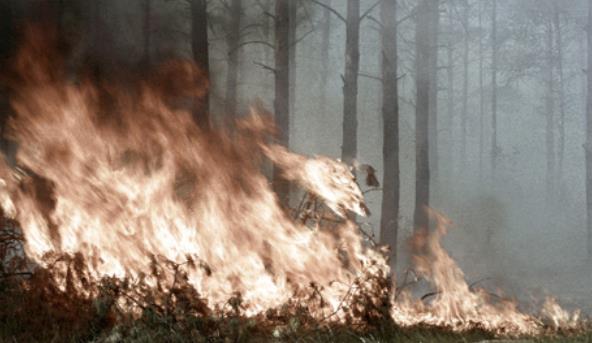
Area consumed by Siberian wildfires has doubled since April 30. Russia now using drones to track fire threat. Photo credit: RIA.
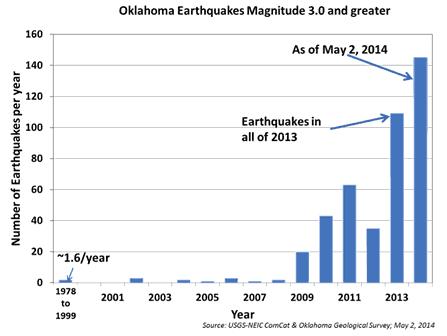
Record Number of Oklahoma Tremors Raises Possibility of Damaging Earthquakes. In Oklahoma? I wonder if this could have anything to do with fracking? Just a WAG. Here’s an excerpt from USGS, The United States Geological Survey: “The
rate of earthquakes in Oklahoma has increased remarkably since October
2013 – by about 50 percent – significantly increasing the chance for a
damaging magnitude 5.5 or greater quake in central Oklahoma. A new U.S.
Geological Survey and Oklahoma Geological Survey analysis found that 145
earthquakes of magnitude 3.0 or greater occurred in Oklahoma from
January 2014 through May 2…”.

Artificial Intelligence: The Biggest Event in Human History, or the Last? Stephen Hawking writing for The Independent
takes a look what might happen when the genie comes out of the bottle
and computer intelligence outstrips our ability to control and contain
it; here’s an excerpt: “…One can imagine such technology
outsmarting financial markets, out-inventing human researchers,
out-manipulating human leaders, and developing weapons we cannot even
understand. Whereas the short-term impact of AI depends on who controls
it, the long-term impact depends on whether it can be controlled at
all.So, facing possible futures of incalculable benefits and risks, the
experts are surely doing everything possible to ensure the best outcome,
right? Wrong…” (Image credit: Psoda Blog).

Why Humans Are Obsessed With The Longest Bridges, The Biggest Buildings And Other Ways to Blow Billions. File this one away under hubris; Quartz takes a look at why some of the biggest projects on the planet often go (wildly) over budget; here’s a clip: “…But
why this pervasive failure to predict these overruns, despite their
seeming inevitability? The answer lies in the very things that make us
human, what Flyvbjerg calls the “four sublimes”: the excitement of
engineers and technologists building the newest or largest item of its
kind; the rapture politicians receive from building monumental works
that increase their public profile; the delight of businesses and trade
unions generating money and jobs; and the aesthetic pleasure generated
by iconically large design…” (Photo credit: Wikimedia Commons).

The Rise of “Sadvertising”.
Hey, if we can’t make ’em laugh, maybe we can make them weep (and buy
crap they don’t really want or need!) Check out the story at Fast Company; here’s an excerpt: “Have
you been brought to tears by an ad, or five, over the last while? It’s
not hormones/your meds/the lunar cycle/the polar vortex. Here, we look
at the most weepy ads of the last few years and talk to ad players about
why brands have gotten so damn emotional…”

The End of Food.
Has a tech entrepreneur come up with a product to replace our meals? A
product called “Soylent”? Mmmmm. Before you laugh out loud, check into
Lizzie Widdicombe’s article at The New Yorker; here’s a clip: “What
if he went straight to the raw chemical components? He took a break
from experimenting with software and studied textbooks on nutritional
biochemistry and the Web sites of the F.D.A., the U.S.D.A., and the
Institute of Medicine. Eventually, Rhinehart compiled a list of
thirty-five nutrients required for survival. Then, instead of heading to
the grocery store, he ordered them off the Internet—mostly in powder or
pill form—and poured everything into a blender, with some water. The
result, a slurry of chemicals, looked like gooey lemonade. Then, he told
me, “I started living on it…”
Photo credit above: “Tasters have compared Soylent to Cream of Wheat and “my grandpa’s Metamucil.” Photograph by Henry Hargreaves.

Bottoms Up: Beijing Residents Mock Pollution with “Airpocalypse IPA”. I could use a bottle right about now, after those last few articles. The Wall Street Journal reports, here’s the introduction: “Adam
Goldstein was checking the Beijing air quality index on his iPad and
laptop all day Saturday. For once, though, he was hoping the index would
show heavy pollution, since it meant cheaper beer. One of Beijing’s
micro-brew companies, Jing-A Brewing, was rolling out its latest
brew, an IPA called the Airpocalypse, the price of which would be based
on the amount of fine particulates in Beijing’s air. If the AQI hit 500
or above, a measurement identified on the U.S. Embassy’s Beijing Air
Twitter feed as “beyond index,” the beer would be free…”
Photo credit above: “An
unusually nice day (by Beijing standards) meant Jing-A’s Airpocalypse
IPA was sold at nearly full price during its launch on Sunday.” Debra Bruno for The Wall Street Journal.

TODAY: Sunny spells, more wind. Winds: SE 15-25. High: 64
TUESDAY NIGHT: Patchy clouds. Low: 52
WEDNESDAY: Milder. T-storms rumble in late in the day and at night. High: 69
THURSDAY: Warm & humid. Severe storm outbreak possible. Wake-up: 58. High: 78
FRIDAY: Showers taper, cooler breeze. Wake-up: 55. High: 58
SATURDAY: Fading sun, showers at night. Wake-up: 46. High: 68
SUNDAY: Mild & muggy. Few T-storms. Wake-up: 54. High: 72
MONDAY: Warm, sticky & unsettled. Another potential severe outbreak? Wake-up: 60. High: 79
Climate Stories….
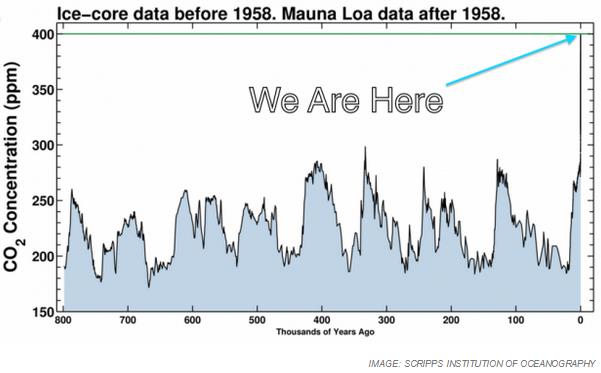
Carbon Dioxide Rocketed To Highest Levels in Human History in April. Here’s an update from Mashable: “As
scientists expected, April became the first month in human history to
have an average concentration of carbon dioxide — the main long-lived
global warming gas — above 400 parts per million (ppm), according to
data from a National Oceanic and Atmospheric Administration (NOAA)
observatory, which sits atop a 11,000-foot-tall Hawaiian volcano. This
is a symbolic but grim milestone for those who are fighting to lower
global greenhouse emissions to reduce manmade global warming; as carbon
dioxide levels climb, so do the risks of triggering dangerous climate
change, such as the melting of land-based ice sheets and flooding of
coastal cities…”
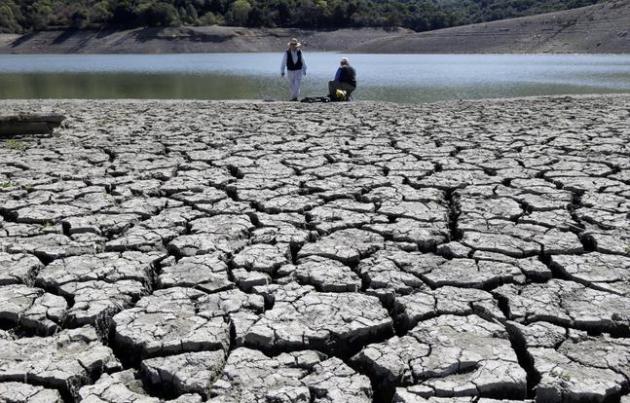
New Report Concludes Global Warming is Real, Will Lead to Increased Extreme Weather Events.
We’re already seeing the impacts; as I’ve been documenting for the
better part of 15 years we’ve gone from theory to reality, with an
apparent increase in the frequency and intensity of extreme weather
events, worldwide. Here’s an excerpt of a story at KTVU-TV in the Bay Area: “An alarming government report,
set to be released this week, says extreme weather events may become
increasingly more common. The National Climate Assessment concluded that
global climate change is real and already affecting Americans. Human
activity, most notably the burning of fossil fuels, has caused
temperatures to continue to rise. Experts believe if emissions are not
reduced, temperatures could increase by as much as ten degrees by the
year 2100…”
Photo credit above: “This March 13,
2014 file photo shows cracks in the dry bed of the Stevens Creek
Reservoir in Cupertino, Calif. The Obama administration is more certain
than ever that global warming is changing Americans’ daily lives and
will worsen — conclusions that scientists will detail in a massive
federal report to be released Tuesday, May 6, 2014.” (AP Photo/Marcio Jose Sanchez, File).

No, what worked in the 70s may not work today. Weather volatility is on
an upswing with more crazy extremes, and that makes gardening more
complicated and challenging than ever. Here’s an excerpt of a story at The New York Times: “…How do we garden in a time of climate change?
It seemed to me that everything I knew about gardening, and much of
what I enjoyed, was based on a set of assumptions about the climate. But
it’s different now. We have to figure out how to garden with the new
seasons, such as they are. Extreme gardening for an extreme climate. I’m
just beginning to figure out the practical implications of this
adaptive approach, but the point seems pretty clear to me: keeping
things alive that won’t make it otherwise. Climate change is going to
force us to work hard at something Homo sapiens has never been very good
at: keeping other species around…” (Photo: Tricia Frostad).

Neil deGrasse Tyson has found a surprising home on FOX Broadcasting
Network to host Cosmos: A Spacetime Odyssey. In the 13-part documentary
series, Tyson’s advocacy of scientific literacy — particularly related
to climate change — is directly at odds with its sister network, Fox
News. In the latest episode
of Cosmos, Tyson devoted the hour to the Earth’s history of changing
climates and subsequent mass extinctions. He ended the show by
forecasting the next mass extinction due to climate change, imploring
his audience to break society’s “addiction” to fossil fuel…”

